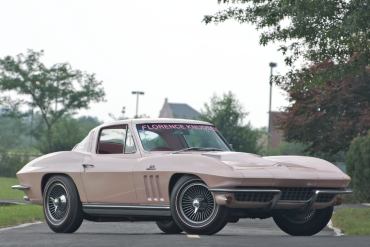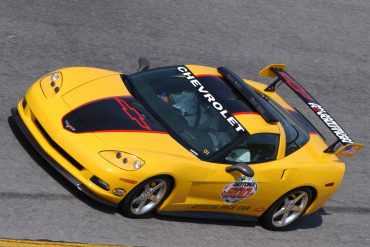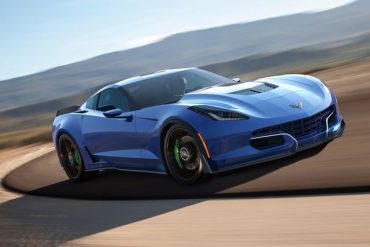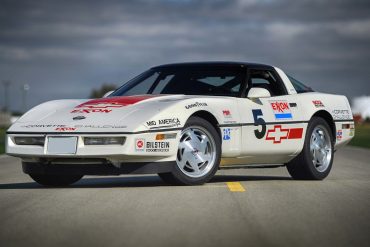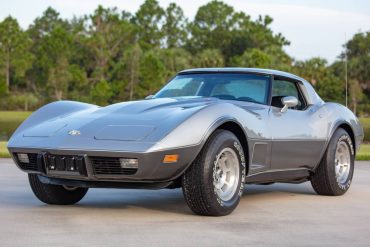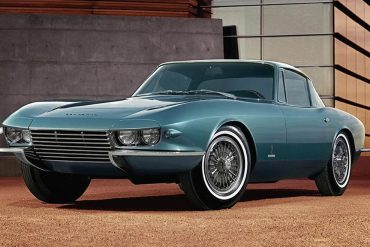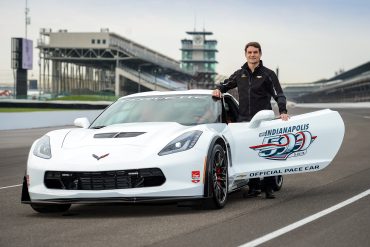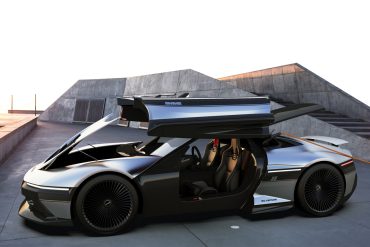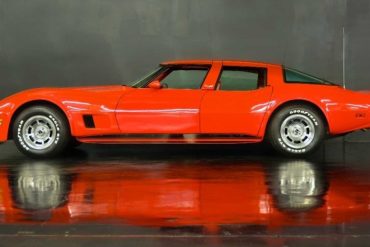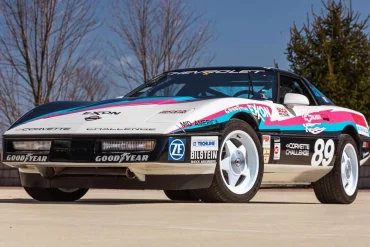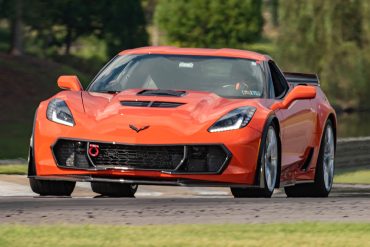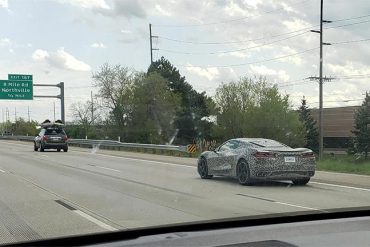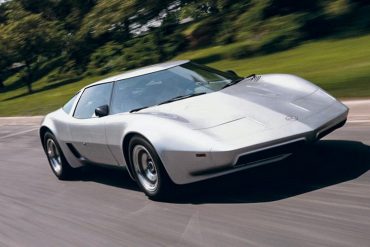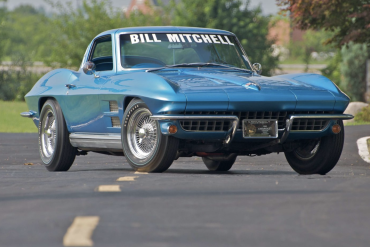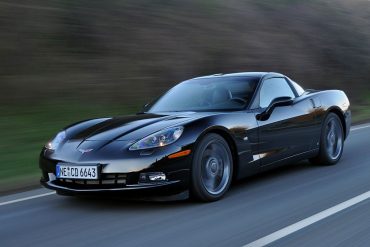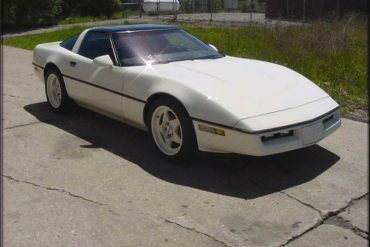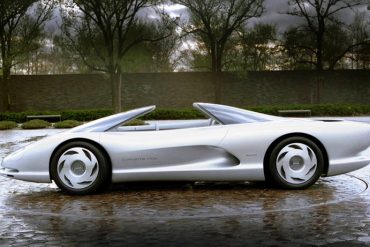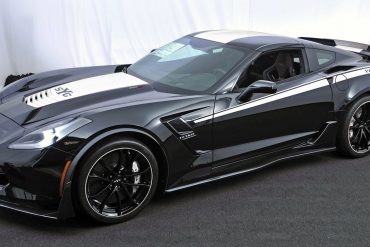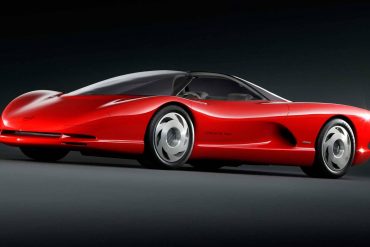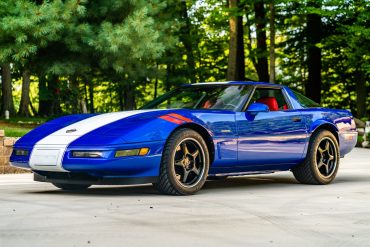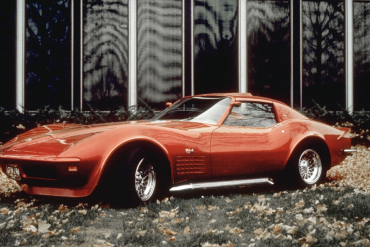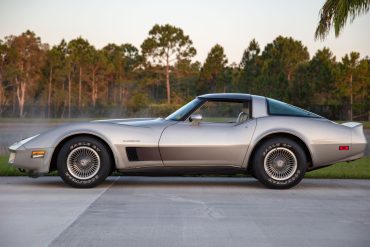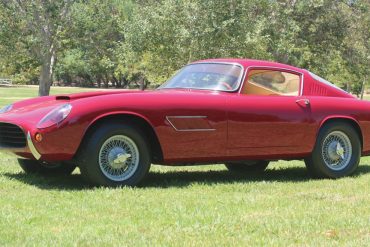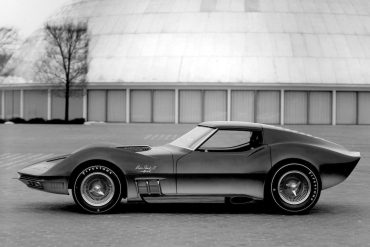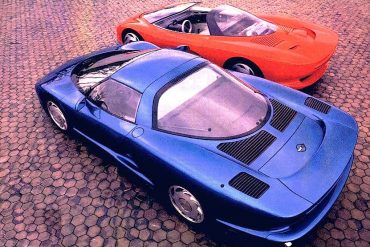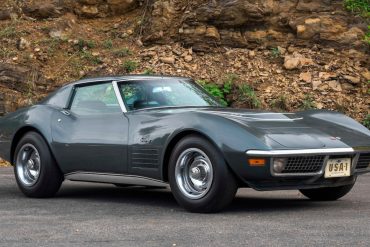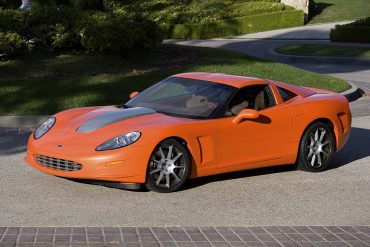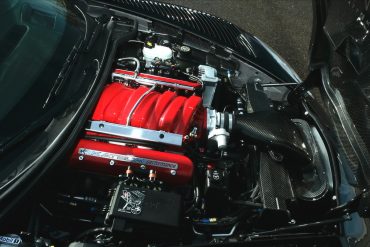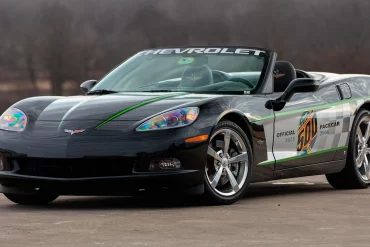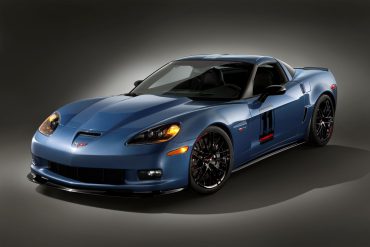"Bunkie" Knudsen ordered it up in the spring of 1964 for his wife, Florence. This car is as much of a gem today as it was when Florence Knudsen first saw it, so says its current owner, Chevy dealer and noted Corvette collector Bob McDorman. It had custom Pink Pearl paint and custom pink leather interior.
In 2005, the Corvette was chosen as the official pace car of the 47th Daytona 500. The car was based on a 2005 production model Corvette and it presented an excellent opportunity for the 2005 Corvette to showcase its true capabilities. The pace car was designed to honor the heritage of the historic Corvette race cars of yesteryear. It was finished in millennium yellow with over-the-top black racing stripe that runs from the hood to the trunk lid. It is powered by a 6.0L V-8 LS2 engine with 400 horsepower.
Genovation Cars unveiled an electric Corvette with more power under its hood than a Dodge Challenger Hellcat. They call their car the Genovation GXE, and it is an EV (electric vehicle) variant of the seventh-generation Corvette. The company decided that they would replace the factory LT1 engine found in all base-model C7 Corvettes with a pair of electric motors that, when working in conjunction with each other, provide over 800 horsepower and 700 pound-feet of torque.
The 1988 Corvette Challenge Series was created by John Powell of Powell Motorsports. Chevrolet built fifty-six identical Corvettes for the first year of the Corvette Challenge in 1988. Each was equipped exactly the same, with all standard equipment, the 245hp Cross-Fire fuel injection engine, Doug Nash 4+3 transmission, Z51 Handling Suspension package.
The 1978 Silver Anniversary Edition Corvette was developed to offer consumers a “collectible” model that commemorated one of Corvette’s milestone production anniversaries (its twenty-fifth anniversary in this case) in a way that had ever been done previously with any Corvette model year that had come before it. The car was mechanically identical to 1978 counterparts.
Among car collectors, enthusiasts, even kids who’ve yet to master driving, the Chevrolet Corvette needs no introduction. Introduced in 1953,...
The Corvette skipped a year and returned to the Indy 500 in 2015. NASCAR legend Jeff Gordon drove the 'Vette for the first lap, and the car had a fairly simple body with the race decals on the doors and sponsor stickers at the front end. Gordon, who grew up in nearby Pittsboro, Indiana, is no stranger to the Indianapolis Motor Speedway. He won the first NASCAR race in the history of the famed 2.5-mile oval and has won four more times.
There’s a long, rich history between the Chevrolet Corvette and the DeLorean Motor Company (DMC), or at least between GM...
Chevrolet had actually planned on making a family minded sports car at a rate of 40 per year, and to call it "Corvette America." It was designed by California Custom Coach in Pasadena. The one prototype and five production cars that were assembled were built by cutting two cars in half which, when mated together, extended the wheelbase of the vehicle by 30 inches.
The 1989 Corvette Challenge cars had a unique option code from the factory, it was "R7F". The documentation from GM clearly indicates that the cars were produced for the express purpose of racing in the SCCA Corvette Challenge Series. There is also documentation that identifies by serial number, all Corvettes produced with these option codes. Therefore, it is relatively easy to validate the authenticity of any Challenge car.
For the 2014 model year, the Chevrolet team sculpted the seventh-generation Corvette into the most sophisticated, most feature-packed Corvette produced to date. Facing a daunting challenge, new technology enabled Callaway engineers to produce breathtaking power with seamless transition into and out of positive manifold pressure. Entirely new, Callaway’s patented GenThree supercharger design improved airflow quality and increased charge air cooling capacity.
Could This be the Hybrid? Over the holiday weekend, GM was apparently out testing a new version of the C8...
The Chevrolet Aerovette (originally designated Experimental Project XP-882) was developed in the late 1960's under the watchful eyes and mind of Zora Arkus-Duntov. Unlike the XP-819, which ultimately proved to have too much rear weight bias, Duntov focused on developing the Aerovette as a mid-engine platform.
The most innovative of the Bob McDorman Collection’s GM Styling Corvettes is this Blue Metallic one-off enjoyed by GM Styling legend Bill Mitchell. The unique paint is accented with a custom made die cast front grille and matching dual front fender vents. A willing 327 CI engine gave this gem all the performance the boss could have asked for...
In addition to the limited-edition Corvette Victory Edition, a second special version of our favorite all-American sports car was introduced in spring, the Corvette Competition. This model, built in limited numbers on the basis of the C6 Corvette, bears strong links to motor sport too, in which the Corvette has proven highly successful. The Corvette Competition was competitively priced and one heck of a package.
In the late 80s, Chevy was developing what some dubbed a ‘Super Vette.’ But the 1989 debut of the Dodge Viper sent GM engineers on a new path to develop a ‘Viper-Killer.’ It started with a factory test mule and the experiment was to see how a ZR-1 would perform if given more power and less weight. It was so fast it was called "Snake Skinnner", for it's ability to beat the Viper and Cobra.
The first of these cars was the 1985 Corvette Indy Concept vehicle. It was developed as a “pushmobile,” meaning that it was a non-functioning, full-size clay mockup that was developed to test market interest in the concept. The car featured the same mid-engine configuration that Zora Arkus-Duntov had always envisioned for the Corvette program.
The Specialty Engineering Group (SVE) has partnered with Chevy to create the 2019 Yenko/SC Corvette Stage II. This new Corvette, which is the creation of Specialty Vehicles Engineering in cooperation with Chevrolet, delivers an incredible 1000 horsepower and 875 lb-ft of torque. Better yet, it's an option that you can order from your local Chevy dealership.
Mid-Engine Prototypes: The 1985 Corvette Indy Concept, The 1986 Corvette Indy and the 1990 CERV III Since the introduction of...
Priced at an additional $3250 for the coupe or an additional $2880 for the convertible, the Grand Sport package included exclusive Admiral Blue paint and featured a single white stripe that ran the length of the body as well as two red accent stripes (also known as “Sebring Stripes”) on the driver side front fender. This unique paint scheme was deliberately developed by GM to pay homage to the classic Corvette Grand Sport Racer of the 1960’s.
Only Bill Mitchell could get away with this. Bill always managed to have a hot daily ride. Engineering prototypes that weren't street-legal stayed behind the fence, but many of the show car Corvettes managed to go home with Bill. His usual statement on his "design study" cars was, "This thing runs like a bear!" For the Mulsanne Bill added, "This is the best Stingray ever."
To celebrate the departure of the third-generation Corvette, Chevrolet decided to offer a final commemorative “Collectors Edition” model. However, recalling their experience with the 1978 Pace Car Replicas it was decided that the 1982 Collector Edition Corvettes would be built only “as needed” to satisfy customer orders and that they would get unique vehicle identification plates to help deter someone from turning a standard car into a Collectors Edition knock-off.
The Story of the Elusive Scaglietti Corvettes Created With the Help of Carroll Shelby History is a curious thing, we...
The Mako Shark II was a radical concept that shaped Stingray years later. While showcasing distinct design cues, the Mako Shark contained many notable features for 1965. It had a one-piece front-end that hinged forward for access to the engine bay, a removable hardtop, knock-off aluminum wheels and a big-block 427. Chevrolet received overwhelming requests to have it produced.
Throughout its tenure, the Corvette has been the recipient of numerous redevelopments and reconfigurations. As such, the iconic American sports...
Did you know that the earliest ZR1 Corvettes came into existence long before any of these later iterations? If not, then take a few minutes to acquaint yourself with one the rarest small-block production Corvettes of all time - the 1970-1972 Corvette ZR1. From 1970 to 1972, Chevrolet offered the ZR1 Special Engine Package, which featured a small-block LT1 engine.
The Callaway C16 was Callaway’s 16th major automotive project. It was a limited production, bespoke automobile, built to order, by what the Press called “the best specialist engineers in the business”. These cars are seriously fast, beautiful, and exclusive. The C16 was a direct competitor for the Porsche GT3, the Lamborghini Murcielago, the Ferrari 599 GTB. It was both faster and more capable than its competitors, at less cost.
In 2006, the company behind the Corvette C6.R pulled out all the stops and developed a Corvette (based on a Z06 donor car and a lot of amazing engineering) that featured an unprecedented amount of horsepower and torque under its hood while packing ultimate luxury inside its ultra-wide carbon-fiber body. The car, which was revealed at the SEMA show in 2007, was called the C6RS Corvette.
Total Production for the 2008 Indy Pace Car replicas sold to the public was 500. The first replica rolled off the production line approximately March 4th, and the last was June 6th. There were 61 Corvettes built in early March, however only 60 cars shipped to the Indianapolis Motor Speedway to be used as rack” and “festival committee" vehicles which were distributed to their lucky drivers on April 9th and in use thru May 31st.
The Z06 Carbon was created to celebrate the 50th anniversary of the first appearance of the Corvette at the 24 Hours of Le Mans when John Fitch and Briggs Cunningham won their class and finished eighth overall. The Carbon edition is essentially a Z06 with a ZR1 chassis and some of the carbon skin. With only 500 examples made, this is one rare and special looking Vette. The limited edition is distinguished by an aggressive look and black accents, reminiscent of the Porsche 911 GTS range.


